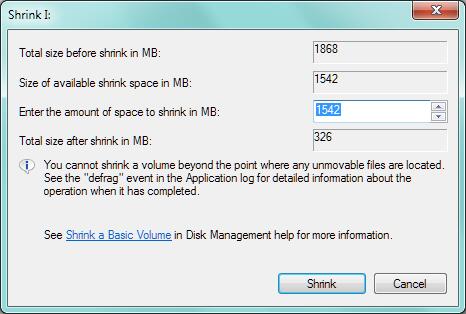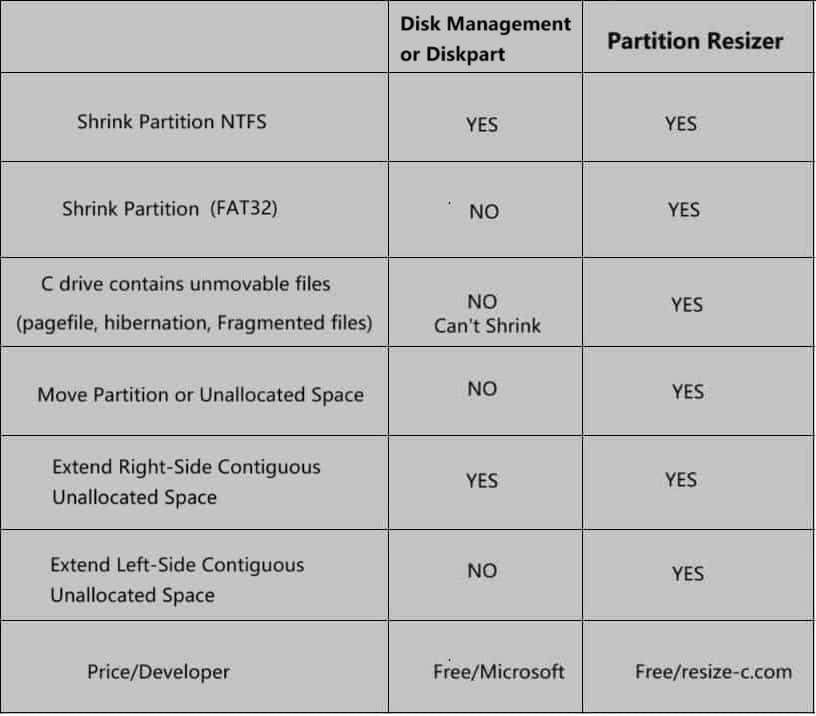How to Shrink C Drive Beyond Limit in Windows 11 10 Server
The Limit: If you use Disk Management, the Shrink Volume window displays the following information:
-
Total size before shrink (in MB) (Default; cannot be modified)
-
Size of available shrink space (in MB) (Default; cannot be modified. This is the maximum shrink limit—you cannot shrink the volume beyond this point.)
-
Enter the amount of space to shrink (in MB):
-
By default, this matches the available shrink space. (If the drive contains unmovable files, the default value may not work)
-
You can enter a smaller number, but you cannot exceed the shrink limit.
-
If your C: drive contains unmovable files, the default value may not work—you must enter a smaller number.
-

Causes: Unmovable files prevent the volume from being shrunk.
Easier, Faster & Free Fix: Partition Resizer is a free Windows tool that simplifies partition resizing—without data loss. Unlike Disk Management, it offers:
-
Drag-and-drop resizing: Adjust your C: drive (or any drive) by dragging its border.
-
User-friendly UI: Easier and more intuitive than built-in tools.
-
Safe shrinking: Avoids issues caused by unmovable files.
Video1: How to shrink a volume C to extend D or E
For Windows 11/10/8/7 => Download Partition Resizer Free [100% Free]
For Windows Server 2025-2003 => Download Partition Resizer Server [Free Demo]
Also read: how to shrink C extend another drive
Disk Management and CMD Diskpart VS Partition Resizer on Shrinking Partition

Related article: Disk Management shrink volume instructions
More Related Articles You May Like
Related Product
- IM-Magic Partition Resizer Server - Partition space redistributing software that works for Windows Server 2003-2025.